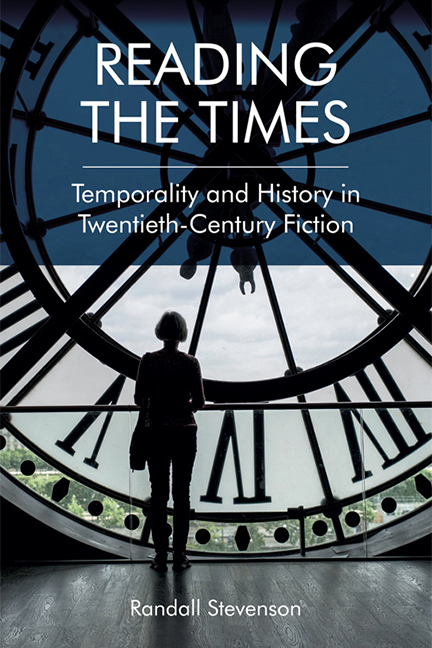Book contents
- Frontmatter
- Contents
- List of Illustrations
- Preface
- 1 Introduction: Picnic Time, Prime Time, Story Time
- 2 ‘All Those Figures’: Joseph Conrad and the Maritimes
- 3 ‘Wheels within Wheels’: D. H. Lawrence, Industrial Time and War Time
- 4 Times in the Mind: Modernism in the 1920s
- 5 Not Like Old Times: The 1930s to Mid-Century
- 6 ‘Time is Over’: Postmodern Times
- 7 Conclusion: Millennial Times, Perennial Times
- Bibliography
- Index
1 - Introduction: Picnic Time, Prime Time, Story Time
Published online by Cambridge University Press: 10 November 2020
- Frontmatter
- Contents
- List of Illustrations
- Preface
- 1 Introduction: Picnic Time, Prime Time, Story Time
- 2 ‘All Those Figures’: Joseph Conrad and the Maritimes
- 3 ‘Wheels within Wheels’: D. H. Lawrence, Industrial Time and War Time
- 4 Times in the Mind: Modernism in the 1920s
- 5 Not Like Old Times: The 1930s to Mid-Century
- 6 ‘Time is Over’: Postmodern Times
- 7 Conclusion: Millennial Times, Perennial Times
- Bibliography
- Index
Summary
On 14 July 2000 – the millennial Bastille Day – headlines and reports throughout the French press featured ‘l’incroyable pique-nique’. Plans for this ‘incredible picnic’ – a main event on the national holiday – had filled a special supplement in Le Monde the previous day. Huge numbers of French citizens, Le Monde explained – around 3 million – had been invited to sit down to lunch along a line spanning France from sea to sea: from Dunkirk on the Channel, southward through Paris, all the way to Prats-de-Mollo on the Mediterranean. Sections of pink-and-white chequered table-cloth – more than 600 kilometres of it – would mark out much of this picnic line. Extensive tree-planting, begun well in advance of the July holiday, would ensure that the line remained visible permanently, even from space, along its entire 960-kilometre length.
Le Monde also explained the motives shaping this ‘incredible’, nation-spanning celebration. According to one of the organisers, it was intended to ‘mobilise a whole family of memories’, celebrating liberty and the French Republic in general, and highlighting particular national triumphs in science and in the creation of the metric system. Those trees and tablecloths were obviously not placed at random, but strategically aligned in order to ‘matérialiser le méridien de Paris’: to revive and make visible the old meridian, centred on the Paris Observatory, running north–south throughout France. Established in 1667, the Paris Observatory and its meridian had acquired much-expanded roles a century or so later, contributing crucially to attempts to delineate a new world – through science, measurement and standardisation, as much as social and political change – following the Revolution of 1789. Early governments in the new French Republic sought to reform both the calendar and time-measurement generally – renaming the months, redefining weeks, and decimalising hours into 100 minutes, each made up of 100 seconds. These initiatives were discarded within a few years, but standardisations of spatial measurement were more successful. Despite the turbulence of the post-revolutionary period, surveyors were able to make observations, throughout France, which allowed them to determine the length of the Paris meridian – running from the Equator, through Paris, to the pole – and to establish a standard metre, equivalent to one ten-millionth of this length.
- Type
- Chapter
- Information
- Reading the TimesTemporality and History in Twentieth-Century Fiction, pp. 1 - 26Publisher: Edinburgh University PressPrint publication year: 2017



